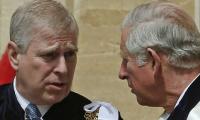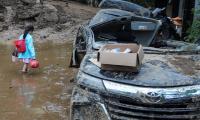Who we are as individuals depends in large measure on the combined effects of many contributing factors. Our educational experiences, cultural and social influences of family and friends, books read, media consumed, life events, etc all collectively shape our worldview and identity. While all these influences exist, perhaps schools have a primary powerful role in influencing and shaping common values and conditioning members of society.
Irrespective of the party in power, this is the one thing our governments have been adept at, except that the values they chose to inculcate are ones that for years failed to acknowledge diversity of people (beyond the customary picture of traditional regional dresses hardly seen in the areas they represent), beliefs (only Muslims, beyond an odd mention of non-Muslims), gender roles and family structure that make up this nation. They forgo teaching empathy and tolerance for diverging opinions, beliefs, and lifestyles but instead teach a monolithic view of society in which everything is just either black or white. Good and bad are stereotyped, often not explicitly but implicitly interwoven – in the books, instruction, and behaviors of teachers.
A lot of criticism has been directed (deservedly so) at the new SNC textbooks, especially the adaptation of the Punjab Curriculum and Textbook Board (PCTB). I have picked issues in the current PCTB SNC primary textbooks that are easy to appreciate and illustrate that textbook development is a huge responsibility. We can see the effects of decades of implicit messaging in curricula playing out in today’s society. Public departments ought to be held responsible for treating this responsibility as casually as they have.
The issue of token inclusion of religious minorities in the new PCTB textbooks has already been receiving coverage. Another issue is the depiction of all women and girls in these books all covered up, without exception. The implicit lesson this teaches is that wearing a dupatta (or almost always a hijab) is the only acceptable way to dress for girls and women all across the country. That, however, is not the reality of the world we live in. Every day girls and women step out of the house making a wide range of sartorial choices.
A disingenuous defence might argue that nowhere does any book explicitly instruct to dress up a certain way. That is how implicit instruction works and has been used for decades to hard wire into young minds a narrow definition of acceptable beliefs and appearances of women. Let me illustrate the effects with some anecdotes of children’s behaviors that I observed first-hand.
On one occasion a young boy, hardly 7-8 years old, in a supermarket in an upscale sector of Islamabad saw an expat woman wearing cropped pants and perfectly appropriate attire. When he saw her, he turned to his mother and exclaimed, ‘Nangi aurat!’ (Naked woman!).
On another occasion a little girl, also a primary schooler, at the Islamabad airport noticed a young woman wearing a kurta with tights, as is mainstream fashion in cities. She too turned to her mother and uttered almost the exact same words as the boy in the preceding anecdote. Both children were programmed, by parents, society and / or schools, to view the women they saw as deviants.
It is quite clear that PCTB textbooks are continuing the tradition of conditioning young minds that women and girls need to dress a certain way to command respect. Such narrow standards lead to insensitive, uninformed and misguided commentary when cases of harassment (and worse) against women become public.
Another area where textbooks do not reflect contemporary Pakistani society is the utter lack of diversity of family structures. There are many lessons across textbooks that describe a family. Every family depicted in government textbooks has the same structure – a father and mother, children and paternal grandparents with no variation beyond that. Textbooks do not acknowledge, thus messaging disapproval, of the possibility that a family can be a single parent family, for whatever reasons. If you want to know why this lack of diversity is problematic, consider what a school principal recently told me about a young child admitted to the early grades at her school.
Several teachers were unable to engage this child who remained quiet and had trouble getting along with peers. He was sent to the principal to be supervised directly like other ‘problem children’. One day the principal was talking to a group of children about how families may look different. To her surprise the child came up to her during break and told her he wanted to talk. It turned out that the child was under tremendous stress because his mother had a male friend while the father was working abroad. When the principal brought up this conversation with the child’s mother, she explained that the child’s father had been deceased for years, but she could not bring herself to break it to her child and had told him a lie about how the father was working abroad.
This is not a one-off incident as I have learnt in my conversations with several school principals, particularly those of good, independent private schools on a mission that put the well-being of all children ahead of profit margins. How a child perceives his/her own family in comparison to the ‘ideal’ shown in most Pakistani books (and, while we are at it, in Pakistani TV dramas) becomes an important determinant of his/her happiness and well-being.
While self-appointed morality police will consider the idea of exposing children to the diverse nature of families a sign of the end-times, how long are we going to submit to these regressive minds at the expense of the mental well-being of our children? It should not just be acceptable, but a necessary practice to normalize all types of families, including single parent families, families where children have lost one or both parents and are living with aunts, uncles, or grandparents, or as orphans. There is no such thing as the ideal composition of a family. Ideal for a child is where the child is happy and thriving – living with both parents and in a joint family system does not necessarily guarantee that.
Women’s fashion and surrounding sensibilities and social norms are constantly changing, but textbooks remain stuck in a time bubble that perhaps never was. Textbooks must catch up to reflect not just our society, but the wider world as well, lest children be hit by culture shock the moment they encounter someone who does not look or dress as they think they ought to.
When you spend decades programming a population to accept a narrow standard of social and cultural appropriateness for women, in a set of roles all connected to men (daughter, sister, wife, mother), never as an independent person (single) or decision maker (single parent), you perpetuate misogyny. That taught or tolerated misogyny makes it acceptable to make public sexist remarks like threatening to slap a woman ‘to expose her real face.’ Sexist language becomes an acceptable weapon in public political discourse. Much the same applies to using religion, blasphemy and anti-Semitism as a club to be wielded against opponents. When sexist and religious attacks become socially acceptable, they become part of the campaign arsenal because they work, and the crowds love it.
Our books and standards of respectability remain frozen in some long-ago century. How can we expect children to grow up accepting different beliefs and ways of living when their lessons continue to perpetuate antiquated biases instead of challenging them? The simple truth is that these textbooks are regressive. Threats of violence against women and justification of such violence when it occurs show that women lose sympathies the moment they step outside of set ‘boundaries’, as we have seen in too many recent cases – and our books reinforce this message. Should we then really be surprised when a five-year-old calls you ‘naked’ because you are not dressed in PTCB-compliant fashion?
The writer is an independent education researcher and consultant. She has a PhD in Education from Michigan State University.
Proliferation of these platforms denotes an important reality for readers in underserved regions
Government decided to crack down decisively with result protest was over by early morning on Nov 27
This is critical time for Pakistan to reconsider its growth trajectory and align with international trends
Khawarij are notorious for extremist proclamations branding anyone who disagreed with their views as heretics
Most SOEs such as PIA, may have a negative net worth too, based on their earnings potential
Fortunately, after a decade’s struggle with smog, Pakistani Punjab has understood the urgency of climate action







